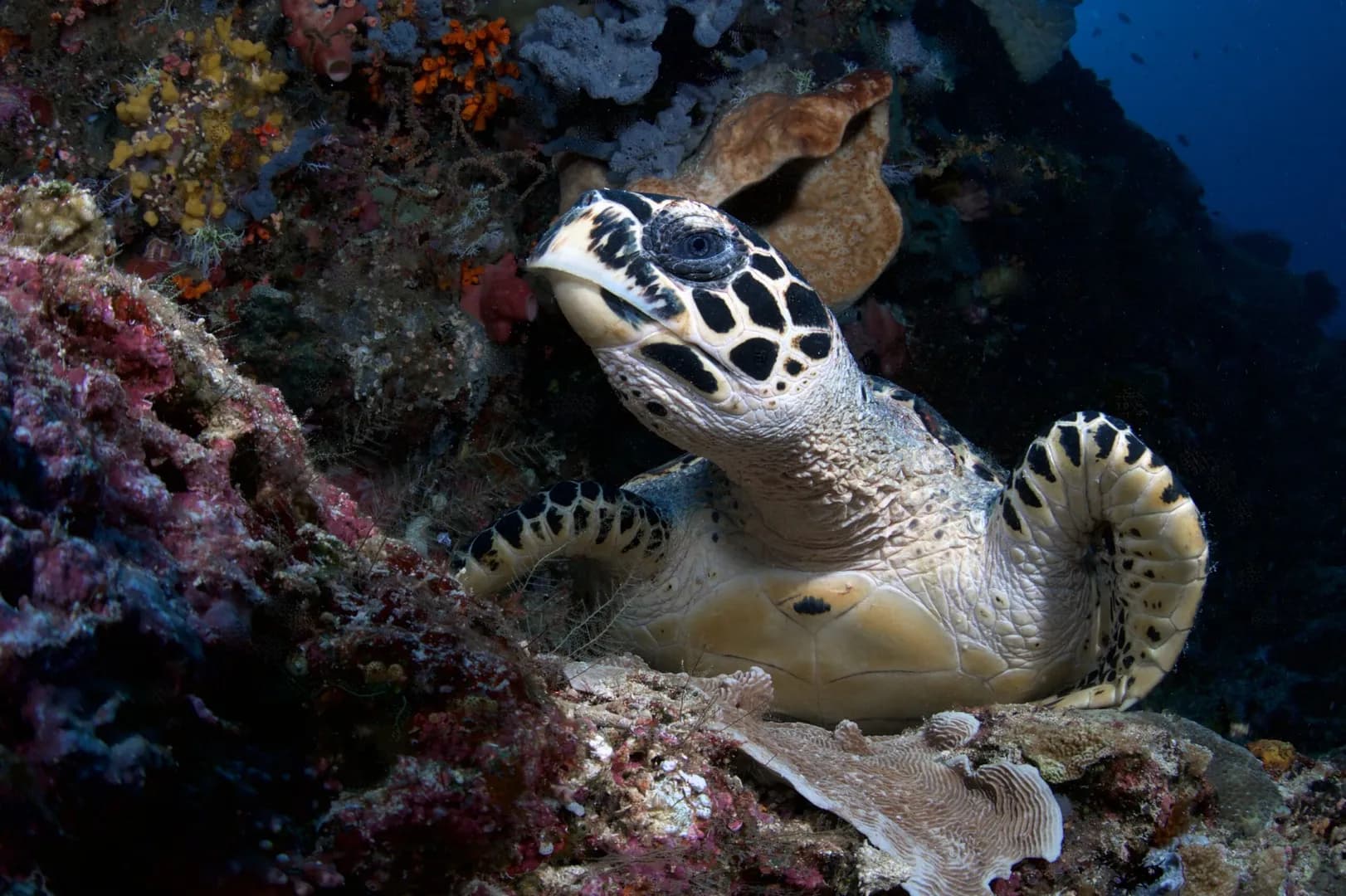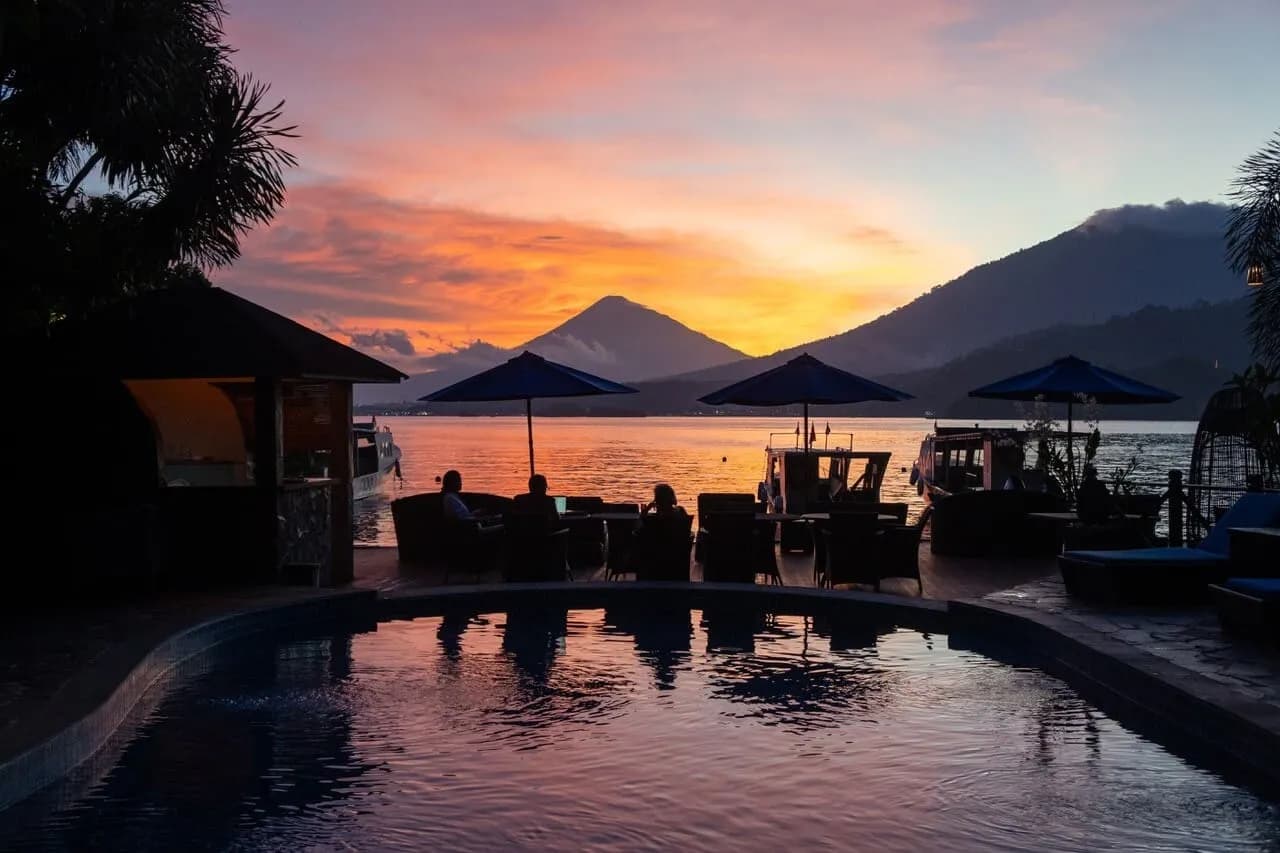Tuesday Tips & Techniques from Photo Pro Sascha Janson #34
On select Tuesdays, Cameras@Lembeh Resort – the first and only dedicated photo & video center in Lembeh Strait with full time on site photo pro – will feature Tips and Techniques by Photo Pro Sascha Janson. Sascha covers everyday situations he sees or has been asked about when talking with our visiting underwater photographers, so stay tuned, Sascha will offer up a range of information to help you become better prepared for underwater photography abroad and overcome some situations that may happen on dive holidays. You never know what piece of wisdom he will impart. Interested in a photo or video course, maybe you need a flip mount holder made on our 3D printer for your new diopter (maybe you just want to see a 3D printer)? Stop into cameras@Lembeh Resort and Sascha can assist you in capturing the best images possible.
This Week’s Tip: Night dives and Photography
Have you ever wondered why your images taken on night dives often have a different color than the ones taken on normal day dives? Because there’s no ambient light, we don’t get that greenish looking color in our pictures. This is especially noticeable when not shooting in “MANUAL” mode. If we use the right settings on our cameras, we can get good-looking images even during the day, but let’s talk about night dives for now.
For the camera to be able to focus (and for ourselves to be able to see something), we need to use a focus light which should be mounted on the camera. If we have to hold that light in one of our hands, it can get very messy underwater – imagine holding your camera in your right hand, your focus light in your left hand, your pointer stick in your left or right hand and then wanting to inflate or deflate your BCD at the same time, or trying to give a signal to your buddy. It is easier if the focus light is mounted on the camera, we can hold the camera & the light in one hand (the right hand) and wherever we are pointing the camera, the focus light is pointing as well. I like to have my pointer stick in my left hand so I can stabilize myself while taking images. Nowadays there are so many different focus lights available, some of them can also switch to red light, which helps when photographing light-sensitive critters such as shrimps and crabs. Some of them don’t mind the red light, but would most likely escape when you shine a white light on them. Many of the new generation focus lights also have a blue (or UV) light built in, so we can do fluoro dives with them as well (see this link).
A good way to attach a focus light to your rig is to attach a ball-mount to the “cold-shoe”, or if there’s no cold shoe on your rig and no other ball-mount available, there’s always the option of a triple clamp.
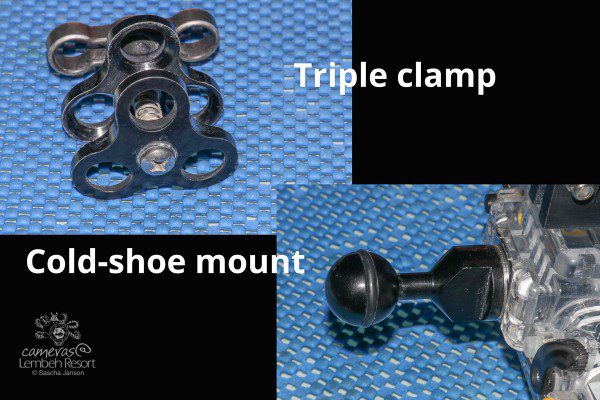
Compare these 2 images of a filefish, one of which was taken during the day and the other at night. In the former, you can see an unappealing greenish look to the photo, caused by ambient light. In the one taken on a night dive, that is no longer a problem and the colors look vibrant and ‘true’.
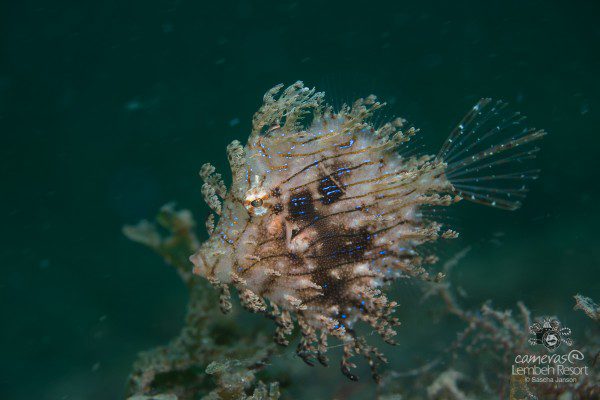
Weedy filefish – image taken during the day with too much ambient light showing up on the image, giving it a greenish look
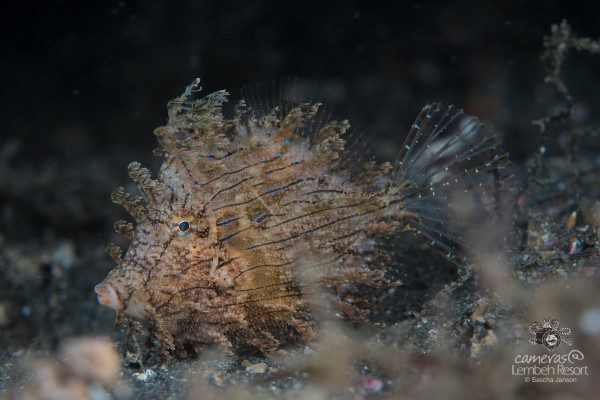
Weedy filefish – image taken at night with no ambient light showing up on the image
A great subject for night dive photography is squids – their iridescence makes for stunning images and at night it’s easier to get close enough to get great photos because they are attracted to your lights, whereas during the day they are shy and difficult to approach closely enough to light properly.
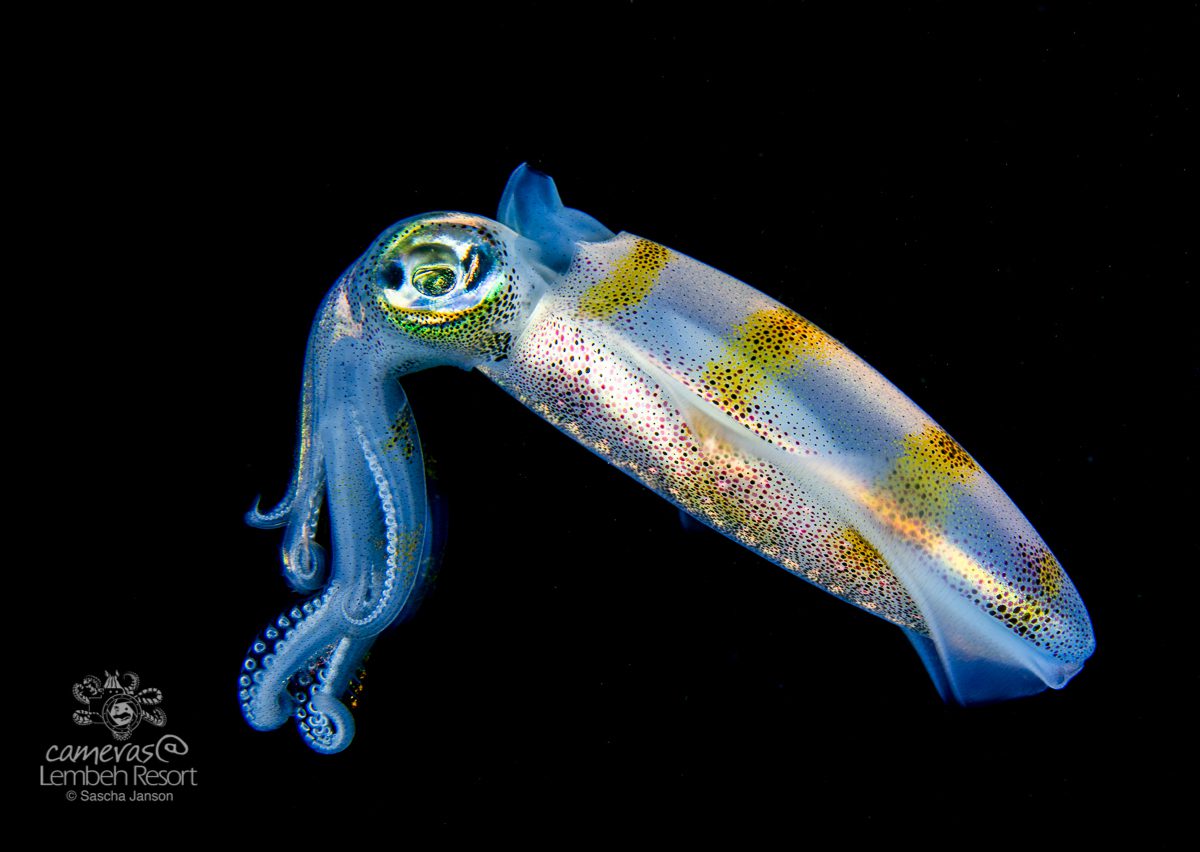
Even if you seldom do night dives, if you visit Lembeh you must try at least one. You will see photogenic nocturnal animals rarely if ever visible during the day, such as the starry night octopus, the infamous bobbit worm, saron (aka marble) shrimps and the eerie stargazer.
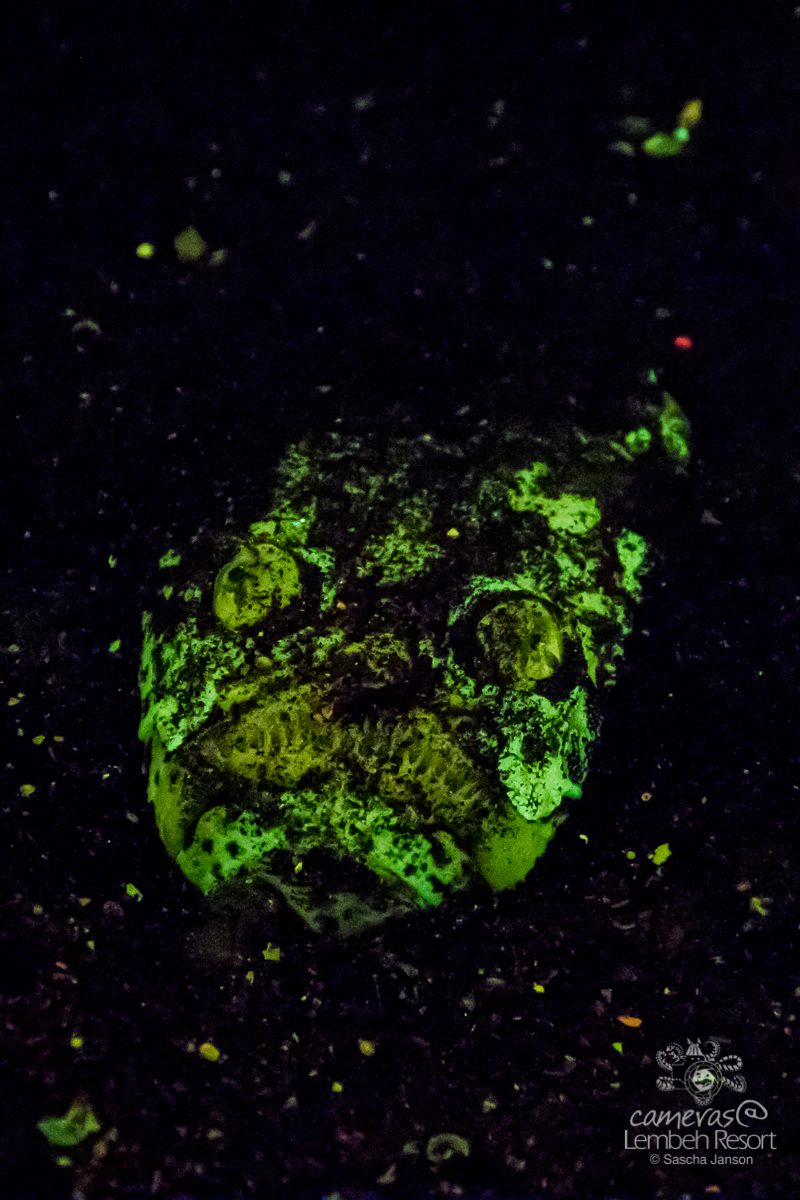
Stargazer with UV light
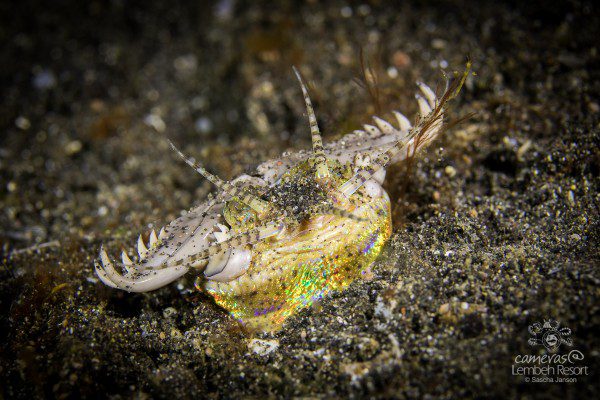
The infamous bobbit worm
Other important things to keep in mind: make sure you are not over-weighted to avoid damaging the environment or hurting yourself, practice good buoyancy and never shine your torch into other divers’ or turtles’ eyes.
In short: on night-dives there is no ambient light, which is ideal for macro photography – only the good light (from our strobes or lights) will show up on our images. For this reason, compared to day dives, a wider variety of settings, or even shooting on automatic mode, will still get you good results, but it is recommended to shoot in manual mode, use a small aperture (high f-number) to get good depth of field, a fairly fast shutter speed to avoid motion blur, and a low ISO to avoid grainy-looking images.
Stay tuned for more Tuesday Tips & Techniques


